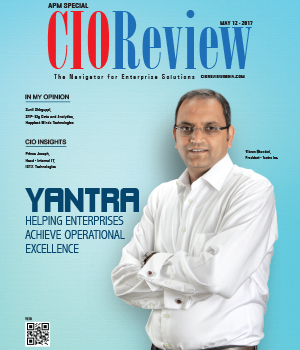
Open Standards as the Next Frontier in Enterprise Mobility
Manjunath Bhat, Director R&D, AirWatch by VMware | Monday, 03 April 2017, 06:18 IST
 Concept of Adhoc MDMs
Concept of Adhoc MDMs
The problem with (Mobile Device Management) MDM today especially with the way Apple MDM supports it is you can have only one MDM profile installed on your device. What does it mean? It means you can only have one controlling authority for a device – which makes sense anyway. Two controlling authorities can wreak havoc if they have conflicting restrictions. But in the scenario where I walk into a restaurant and I want to have ad hoc menus pushed to my device or let’s say I enter a seminar hall and the presenter wants to push down the presentation to all phones and prompt users to put their phones on mute, we currently don’t have a way of pushing down ad hoc “profiles” or “managed” apps and content. That is something more like future beckons.
Open Standards
If there is one reason the internet was a technological phenomenon, it was because the various networks agreed on open standards - a common protocol stack (TCP/IP) that allowed them to talk to each other. If we are to realize the true potential of the benefits of enterprise mobility and the IoT, we have no option but to have software and hardware vendors agree on common standards and develop technologies that are interoperable. There is a reason why standards bodies like 3GPP, ANSI, W3C, ITU, OMA, IEEE and the IETF exist. Software companies have to look beyond parochial interests and work together so we can grow the ecosystem. When the ecosystem grows, the market grows and a growing market is good for the entire industry. Formats like JPG, MP3, MP4 and protocols like http(s) are universally accepted today. Does it come as a surprise that the ubiquitous USB drive expands to “Universal” Serial Bus?
I strongly believe in the idea of providing interoperability between protocols and technologies by means of software and hardware adaptors. I do realize that at times, we cannot afford to drag down future innovation just to conform to the average mediocrity of the current day. However, I would like to caution that any such move towards a non-standard approach in the guise of breakthrough innovation should ensure a “faster, higher and stronger” means to accomplishing a given task as opposed to being only a cosmetic differentiation with the sole intention of a vendor lock-in. If Blink is the new WebKit, aimed to make WebKit ten times faster! “Standardize on protocol and compete on value-proposition” – this is my call for EMM vendors and OEMs for the collective benefit of the industry and our customers.
Open standards between OEMs will ensure that I am able to move from one platform to another much like the one we switch between telecom carriers when we move from country to country. We do not necessarily buy a new mobile device! Truly speaking, continuity and handoff should extend beyond platforms from the same vendor. Why should continuity be restricted between a Chromebook and an Android phone or a MacBook and an iPhone? If we are serious about the internet of things – we should better be adhering to the principles on which the internet itself was founded.
APIs and SDKs
The future of enterprise mobility will cease to be a solution from a single vendor. Customers should be able to leverage APIs and SDKs from multiple vendors and build their own custom workflows. It is impossible for any single, best-of-breed solution to meet the expectations of the growing needs of every customer across every vertical. APIs and SDKs will help customers to fill any missing gaps that exist in the products available off the shelf. Future EMM Systems to make Platform and Device type Redundant
Most EMM solutions today are evaluated and benchmarked by checking features off a list of supported platforms and device types. Here is the radically new approach that we should see in the coming years – Devices will broadcast a “capability-set”. We shall be able to support any device based on its capabilities. So frankly speaking, it will cease to be a question of "whether vendor X supports device Y", the more important question is whether vendor X supports a particular capability and while going forward all devices with that capability will be auto-supported. This is especially true in the age of the internet of things – it would be bizarre to say that we support light bulbs, alarm clocks, toasters and microwave ovens as distinct device types. Rather these devices are supporting the capability of staying ‘connected’.
Conclusion
I was recently watching a documentary on “Man vs. Machine” in relation to the chess match between Garry Kasparov and the IBM Deep Blue and there were questions being raised if a machine can stake claim to have triumphed the human potential. Sure, it can. In addition, someday we might become tools put into use by “intelligent” machines. Nevertheless, here is how it concluded and I paraphrase it as follows - the machine was after all conceived and invented out of human imagination, so it’s ultimately a triumph of mankind over itself.
CIO Viewpoint
Focus of Application Management Solution...
By Martin Ingram, SVP & CIO, Arise Virtual Solutions Inc.
Need of the Hour: Customer Centric Build-Up of...
By Warren Neuburger, CIO & EVP Global Operations & Customer Care, PGi
Sustaining Performance and User Experience...
By Amit Pal Singh, Head - IT Transformation, Gionee India
CXO Insights
Modernizing a Company's Digital Core is Vital...
By Randy Meyer, VP & General Manager, Hewlett Packard Enterprise
5 Key Take a ways for Successful ALM...







